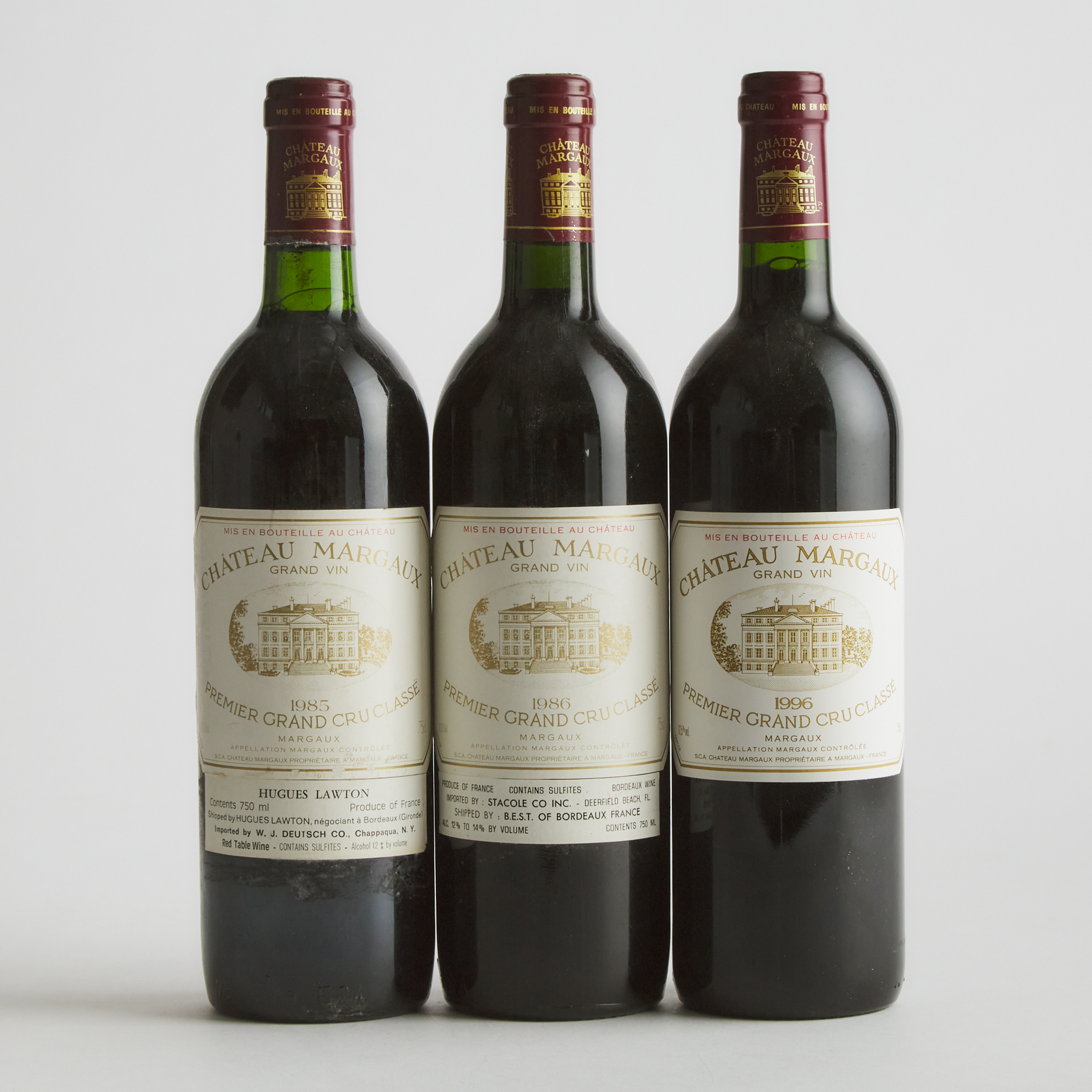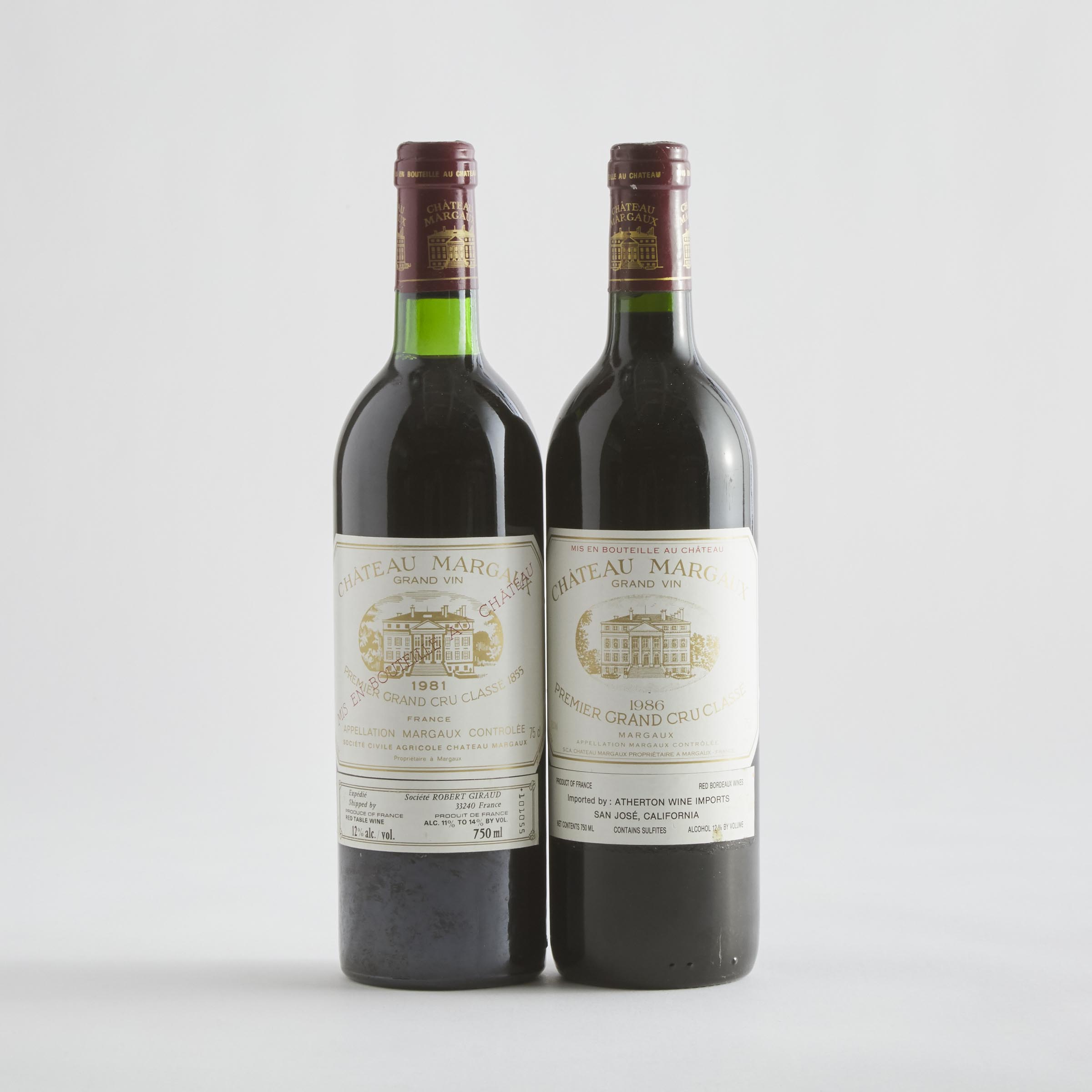Château Margaux 1986
12 bottles per lot
MARGAUX Margaux is unique among the communes of the Médoc: it is the farthest south (isolated from its three famous cousins to the north, St.-Estèphe, St.-Julien and Pauillac) and is made up of several non-contiguous parcels of vineyard land. The appellation of Margaux encompasses the village of Margaux, of course, as well as the villages of Cantenac, Soussans, Labarde, and Arsac. Ideally, the limestone, chalk, clay and sand of Margaux combine (especially where gravel dominates, facilitating drainage) to make a fragrant and silky wine. More Margaux properties were included in the famous classification of 1855 than any other commune. Château Margaux has been occupied since at least the 12th century, with the site occupied by a fortified castle known as Lamothe or La Mothe (from motte, a small rise in the land), and wine under names such as "Margou" and "Margous" was known in the 15th-century. With the arrival of the Lestonnac family in the 16th century that wine production became of particular importance, and in the 1570s Pierre de Lestonnac expanded the property and cleared many of the grain fields to make way for vines. In 1771 wine from the estate became the first claret to be sold at Christie's, and upon visiting Bordeaux in 1787, Thomas Jefferson made note of Château Margaux as one of the "four vineyards of first quality". Château Margaux 1986 Margaux, 1er cru classé Levels: nine into neck, three bottom neck; one damp stained and faded label In original wooden case 12 bottles per lot
Château Margaux 1986
12 bottles per lot
MARGAUX Margaux is unique among the communes of the Médoc: it is the farthest south (isolated from its three famous cousins to the north, St.-Estèphe, St.-Julien and Pauillac) and is made up of several non-contiguous parcels of vineyard land. The appellation of Margaux encompasses the village of Margaux, of course, as well as the villages of Cantenac, Soussans, Labarde, and Arsac. Ideally, the limestone, chalk, clay and sand of Margaux combine (especially where gravel dominates, facilitating drainage) to make a fragrant and silky wine. More Margaux properties were included in the famous classification of 1855 than any other commune. Château Margaux has been occupied since at least the 12th century, with the site occupied by a fortified castle known as Lamothe or La Mothe (from motte, a small rise in the land), and wine under names such as "Margou" and "Margous" was known in the 15th-century. With the arrival of the Lestonnac family in the 16th century that wine production became of particular importance, and in the 1570s Pierre de Lestonnac expanded the property and cleared many of the grain fields to make way for vines. In 1771 wine from the estate became the first claret to be sold at Christie's, and upon visiting Bordeaux in 1787, Thomas Jefferson made note of Château Margaux as one of the "four vineyards of first quality". Château Margaux 1986 Margaux, 1er cru classé Levels: nine into neck, three bottom neck; one damp stained and faded label In original wooden case 12 bottles per lot








Testen Sie LotSearch und seine Premium-Features 7 Tage - ohne Kosten!
Lassen Sie sich automatisch über neue Objekte in kommenden Auktionen benachrichtigen.
Suchauftrag anlegen